3-9
Players
per table
3×3
Blocks with
questions
120
Minutes
playtime
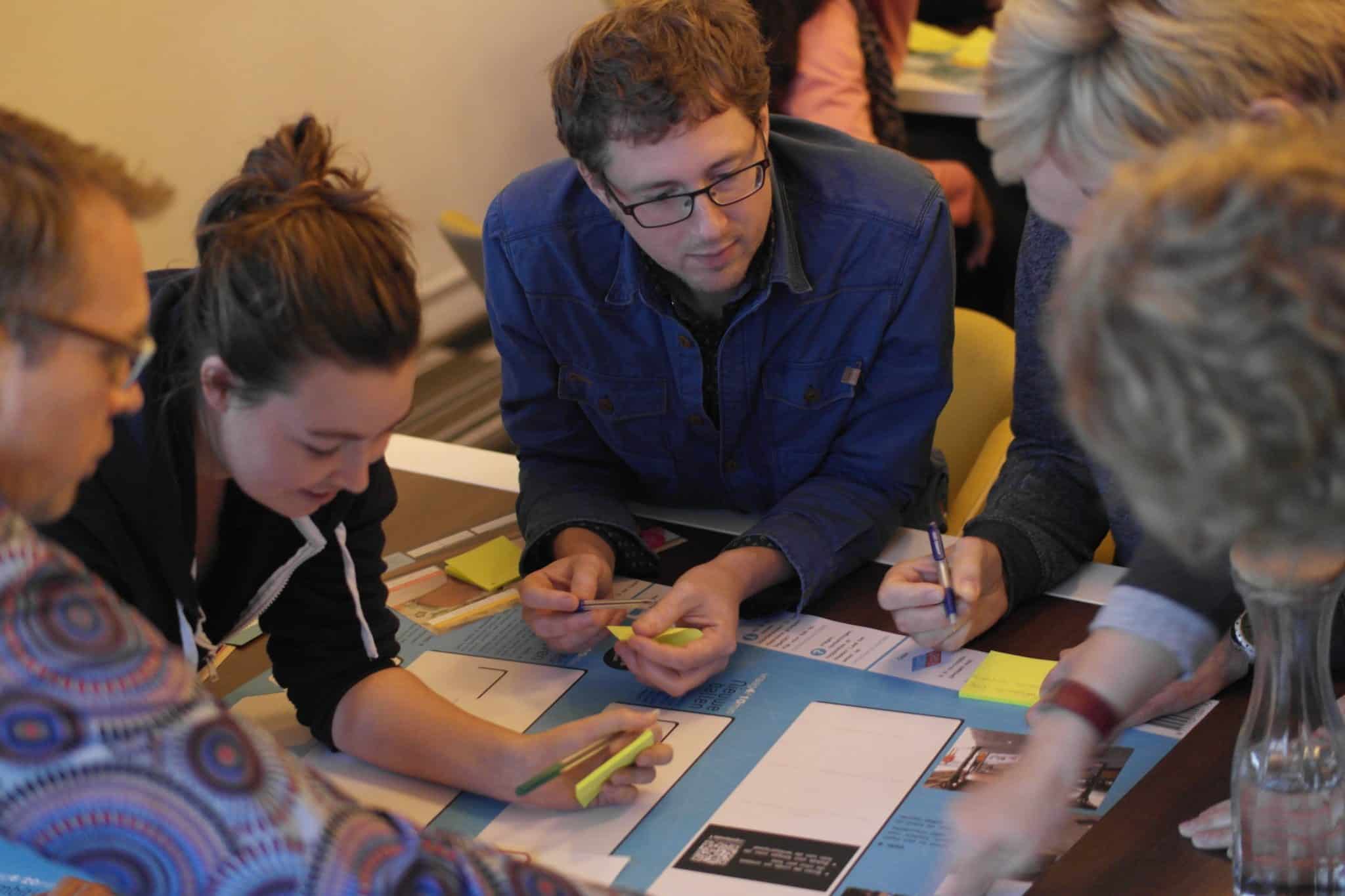

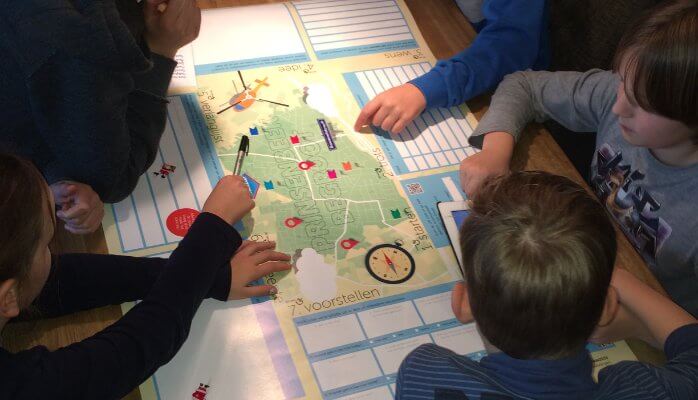

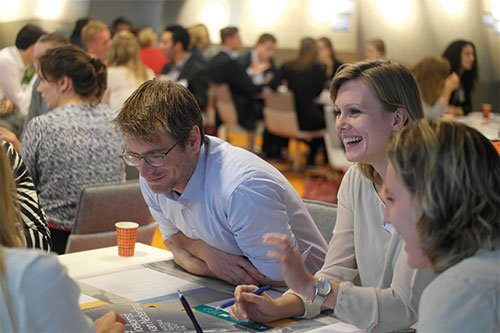
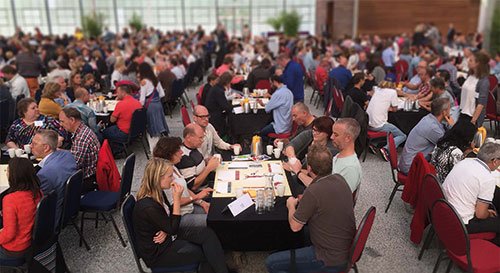
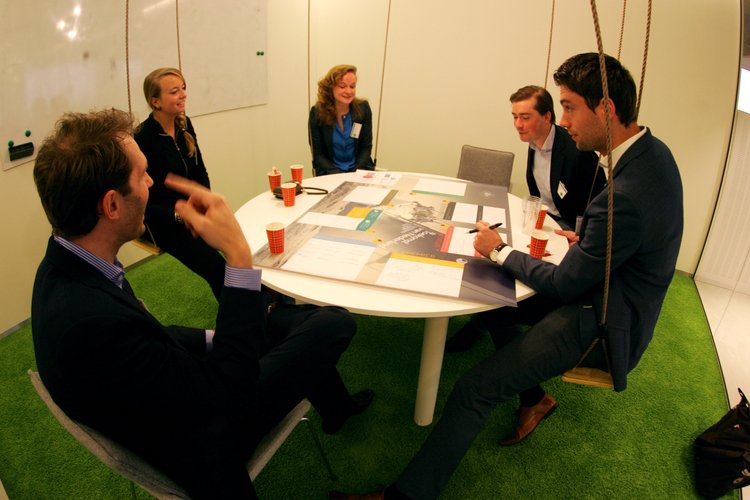
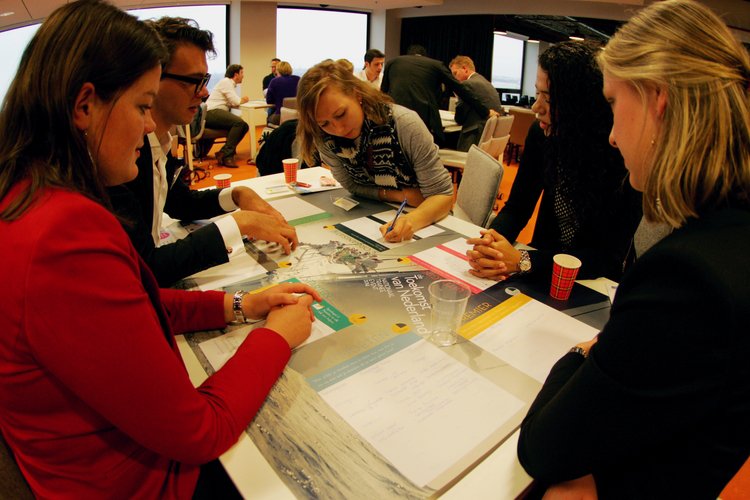
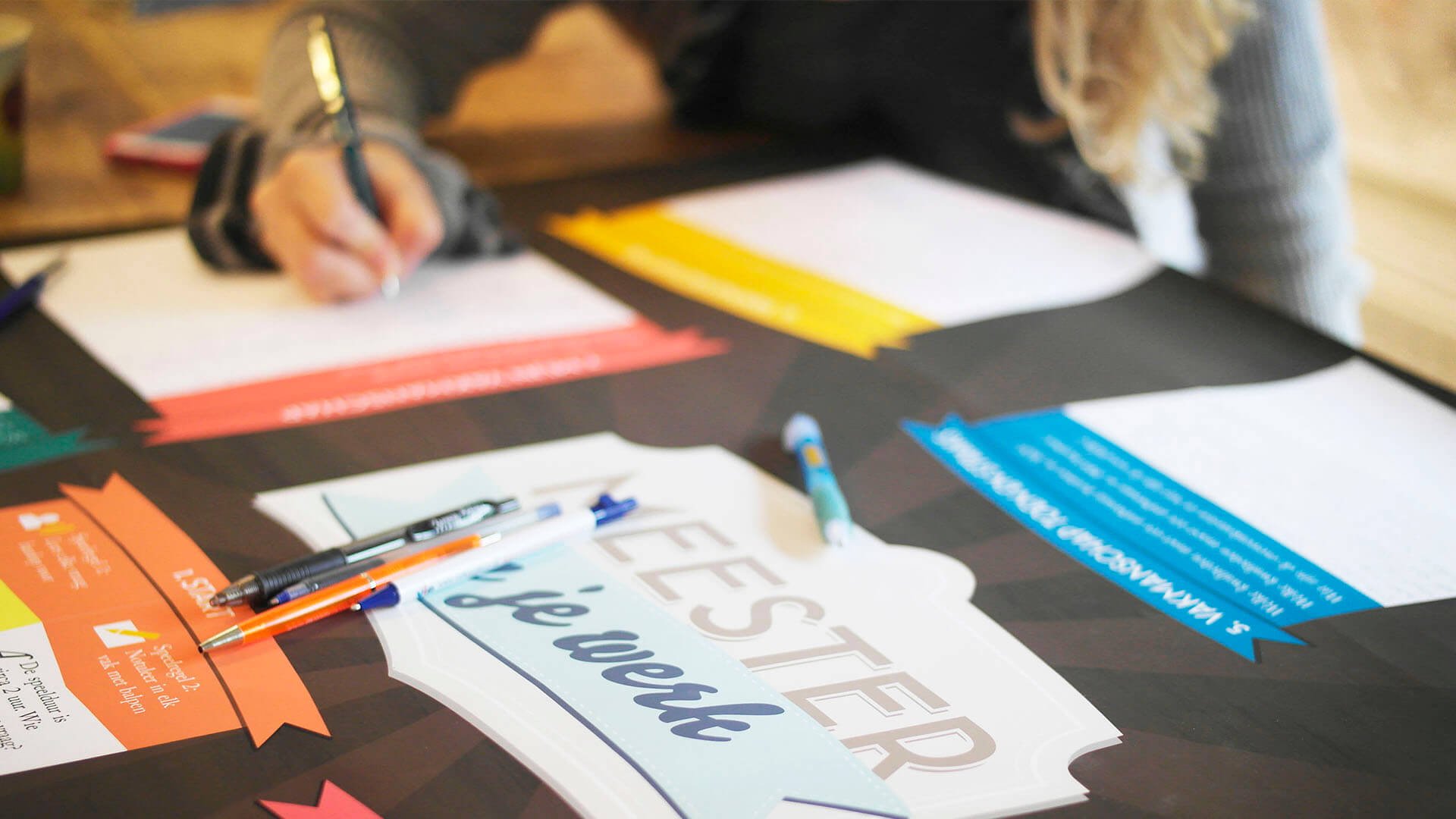
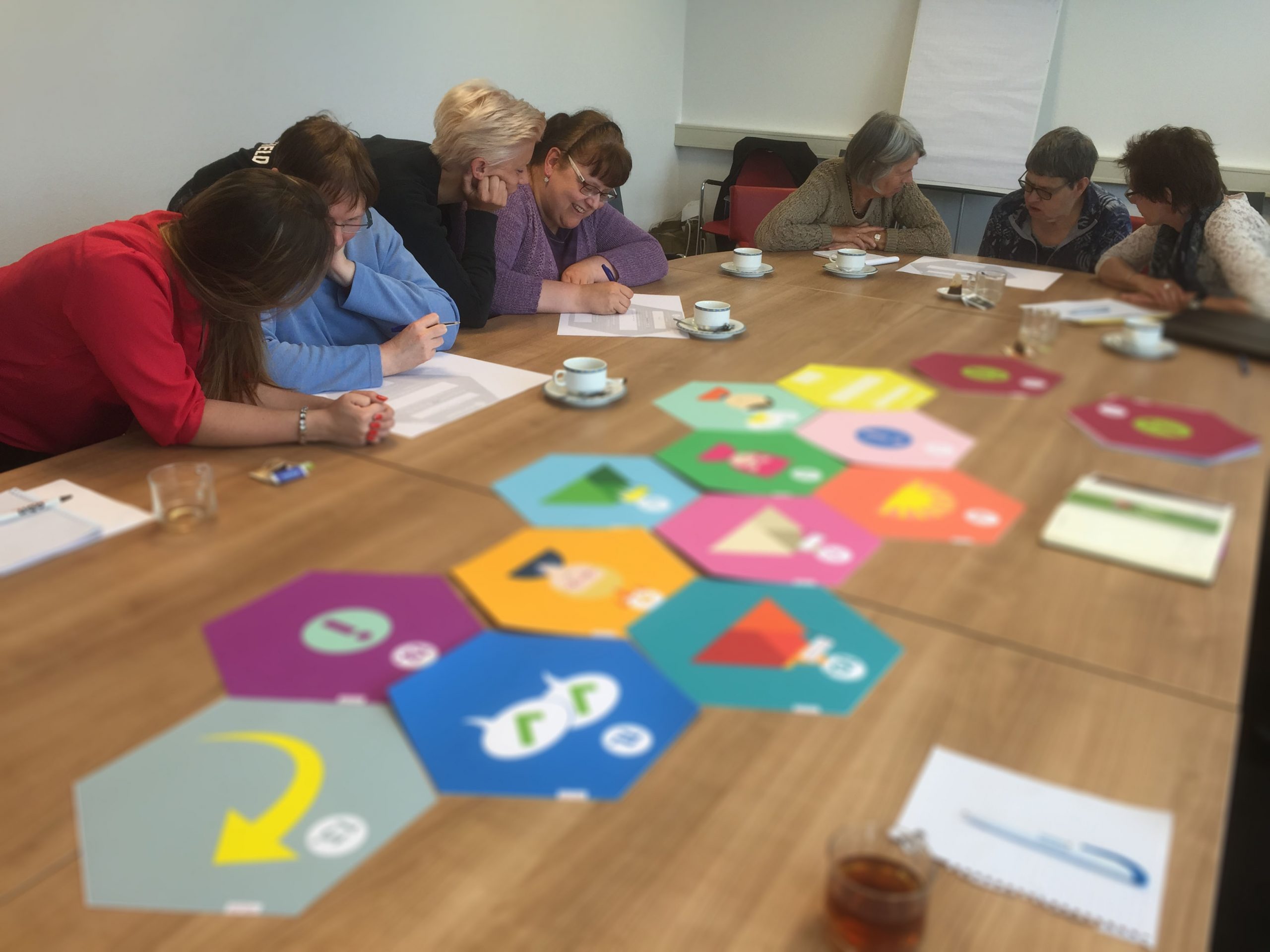
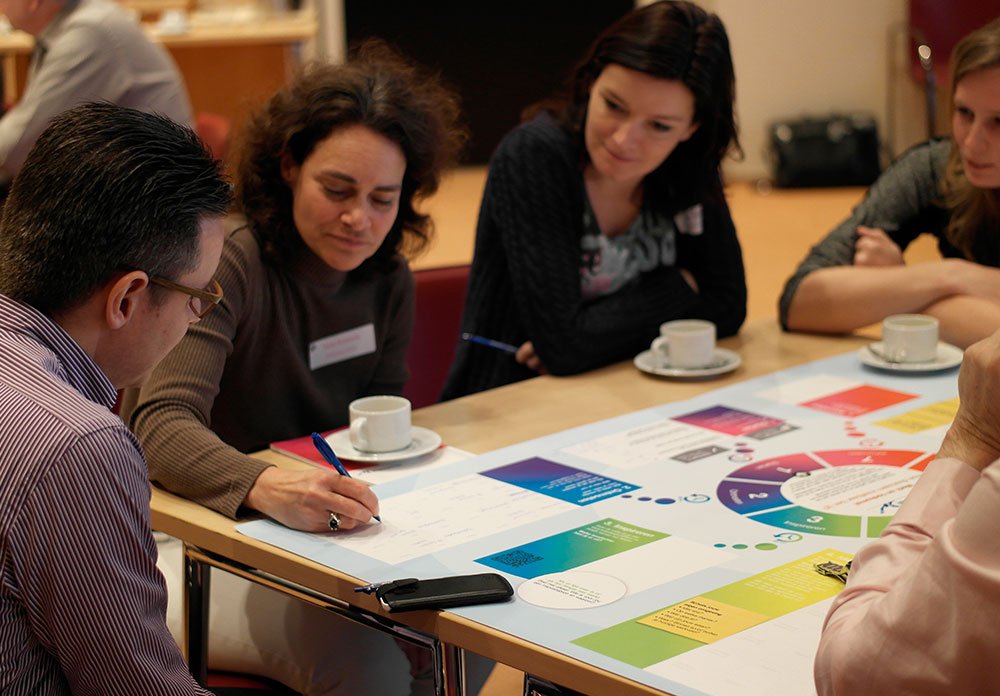
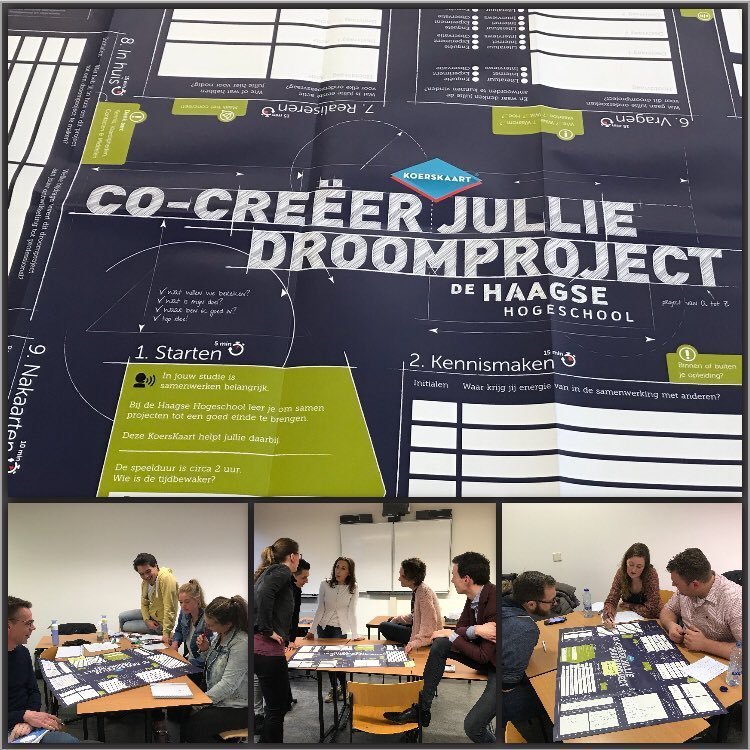
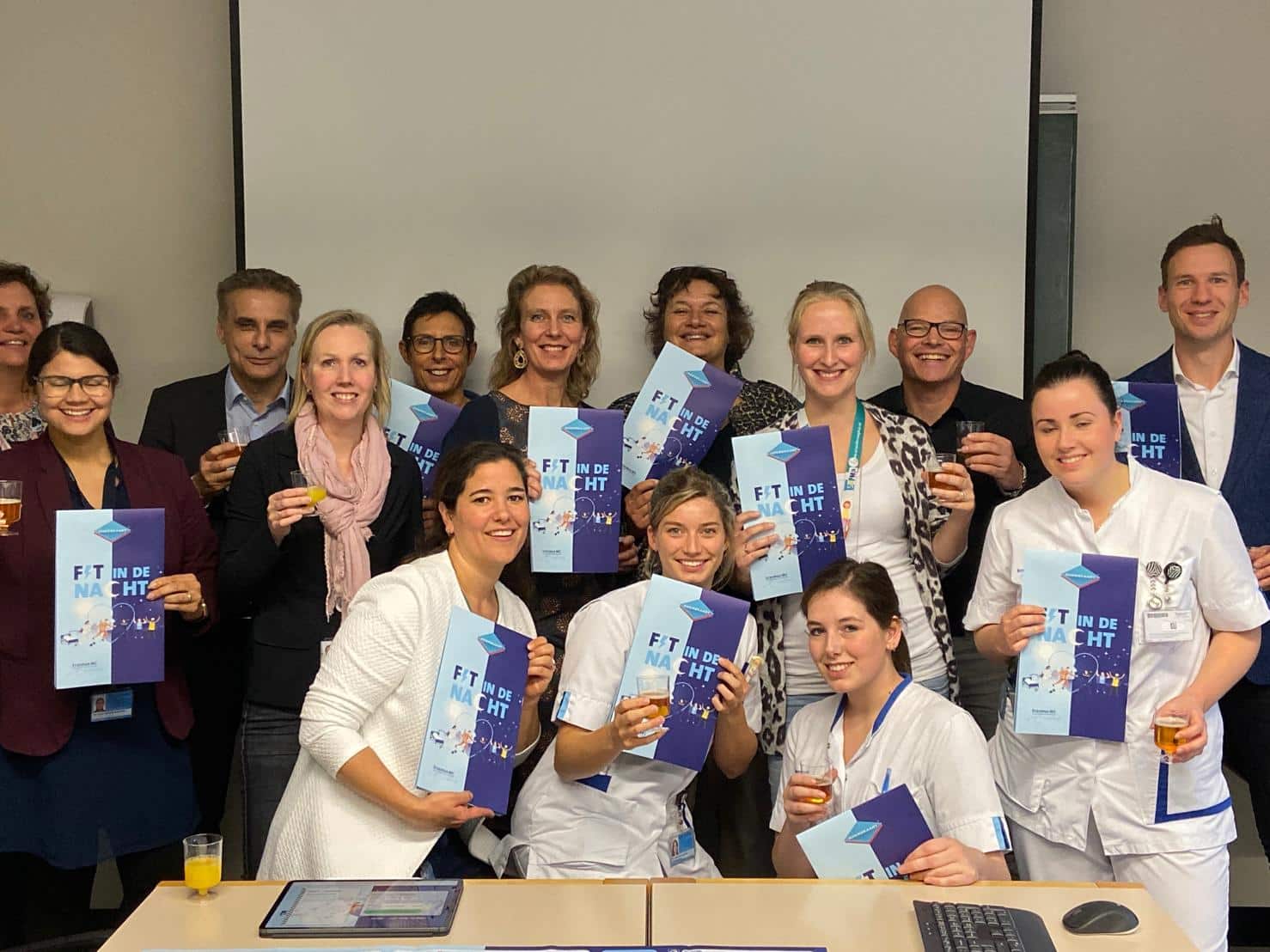
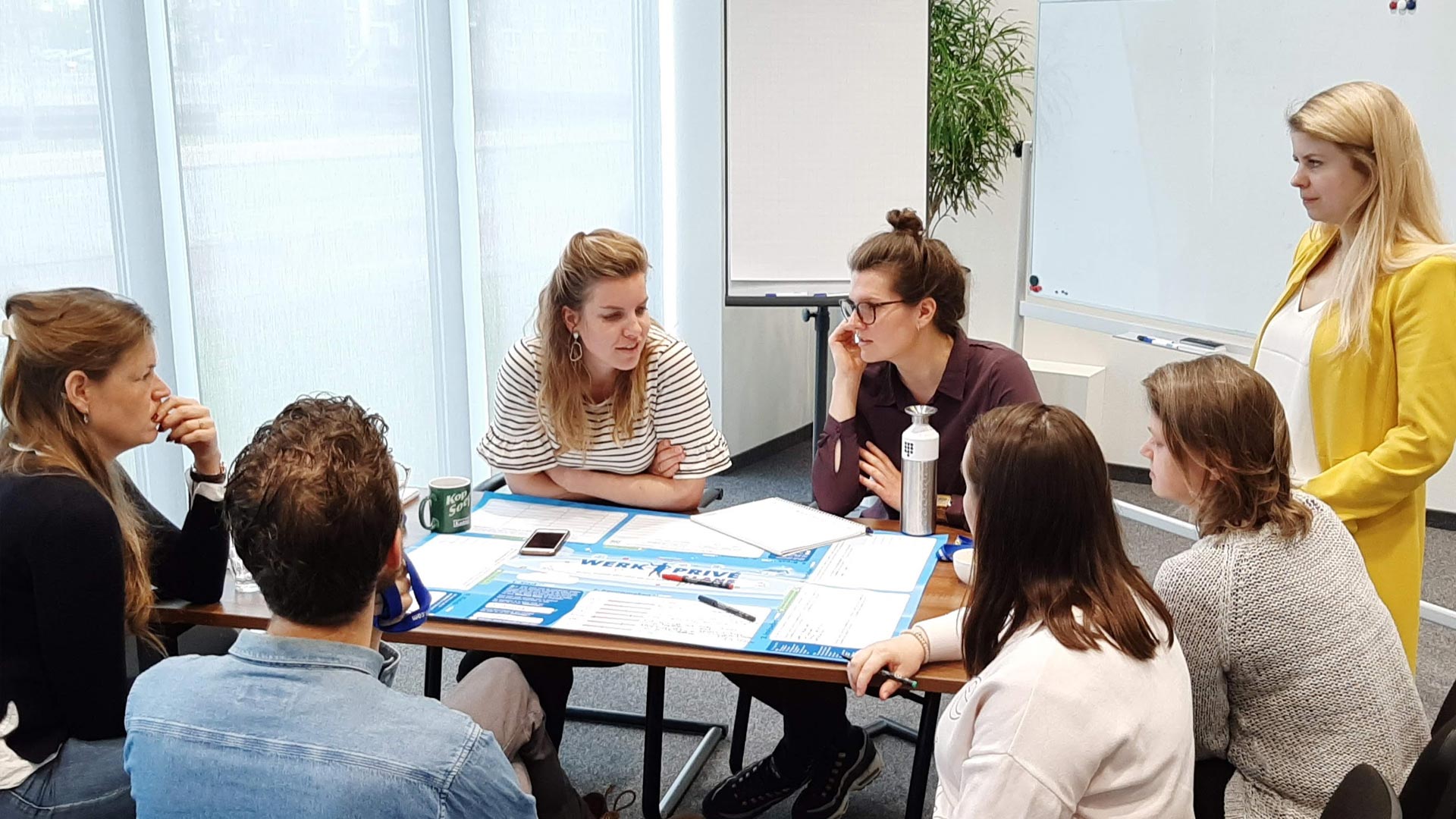




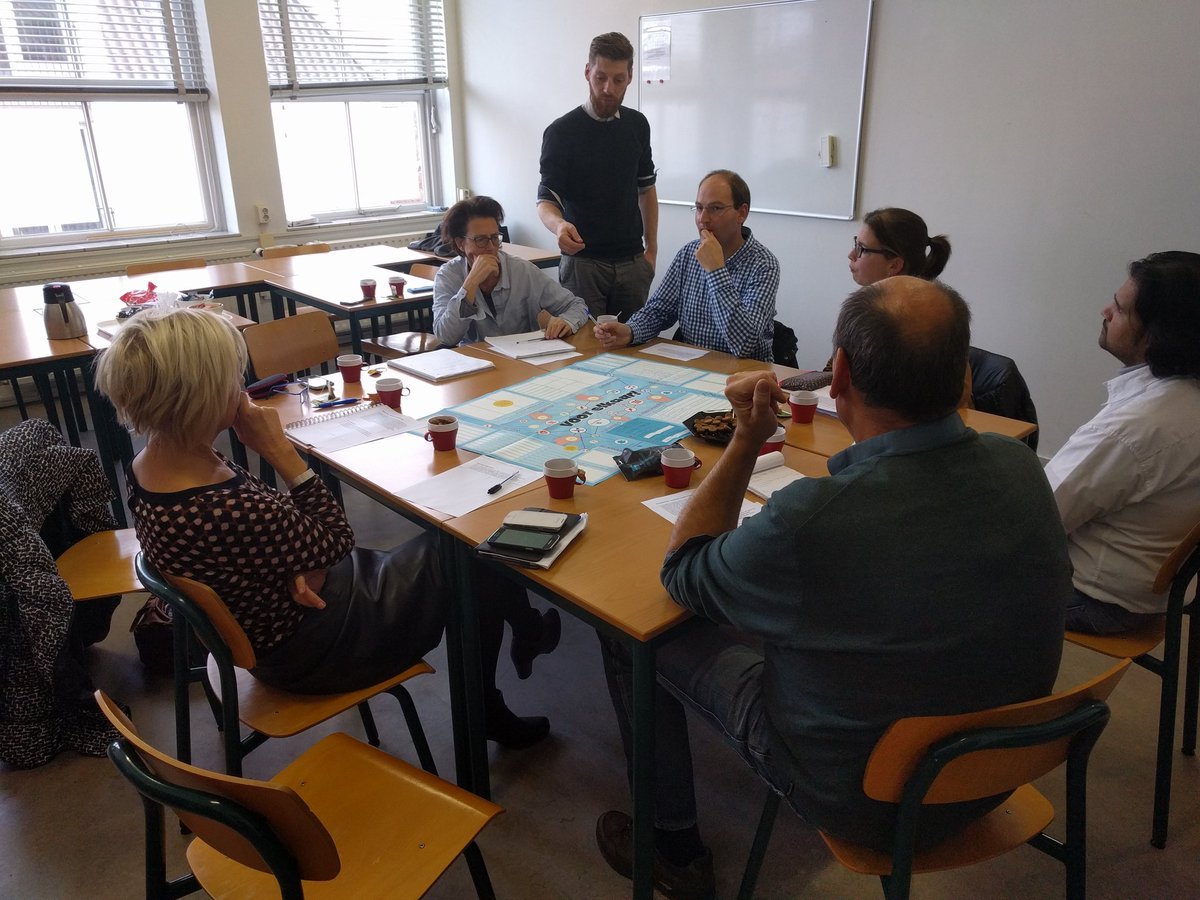

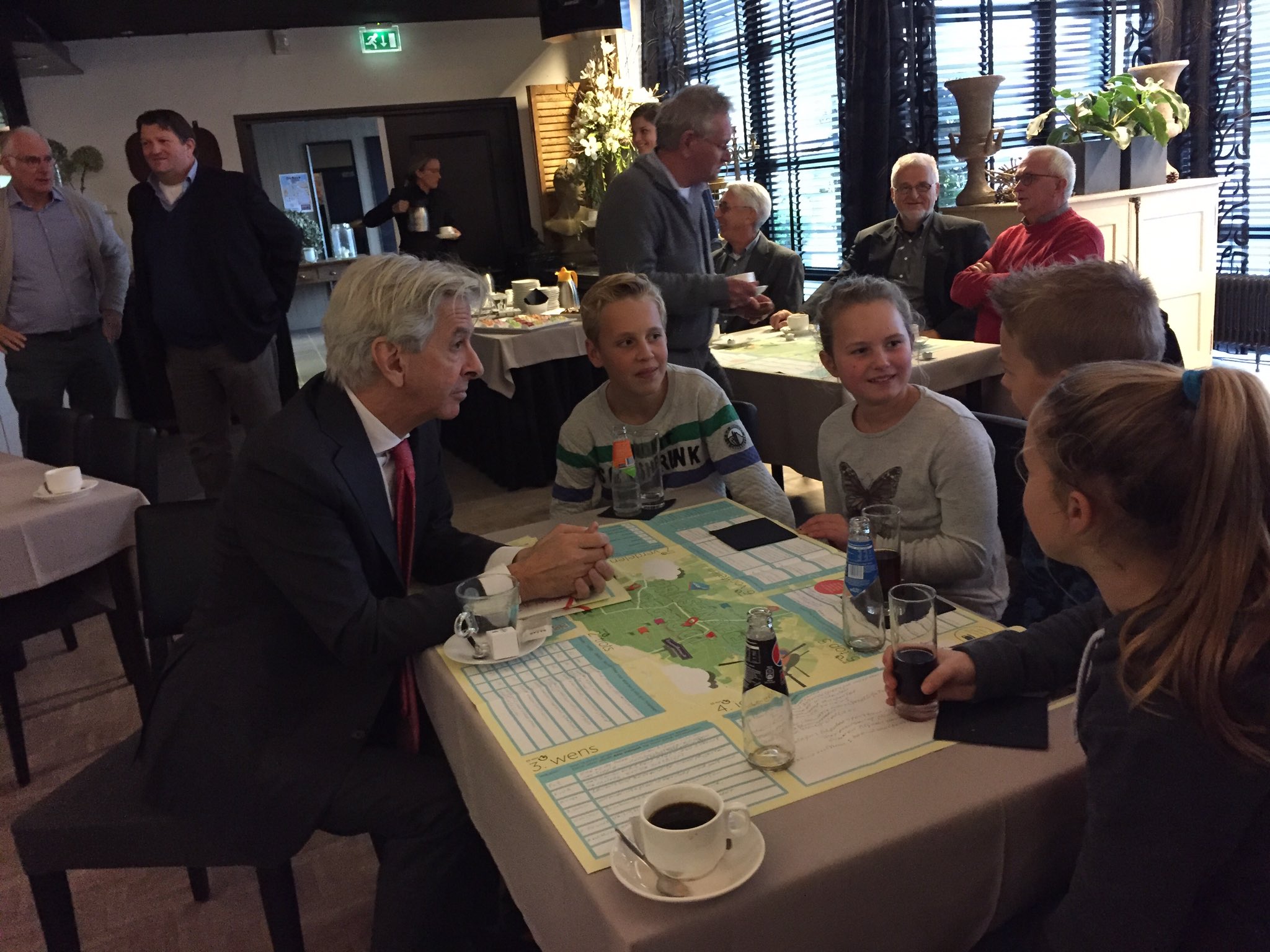
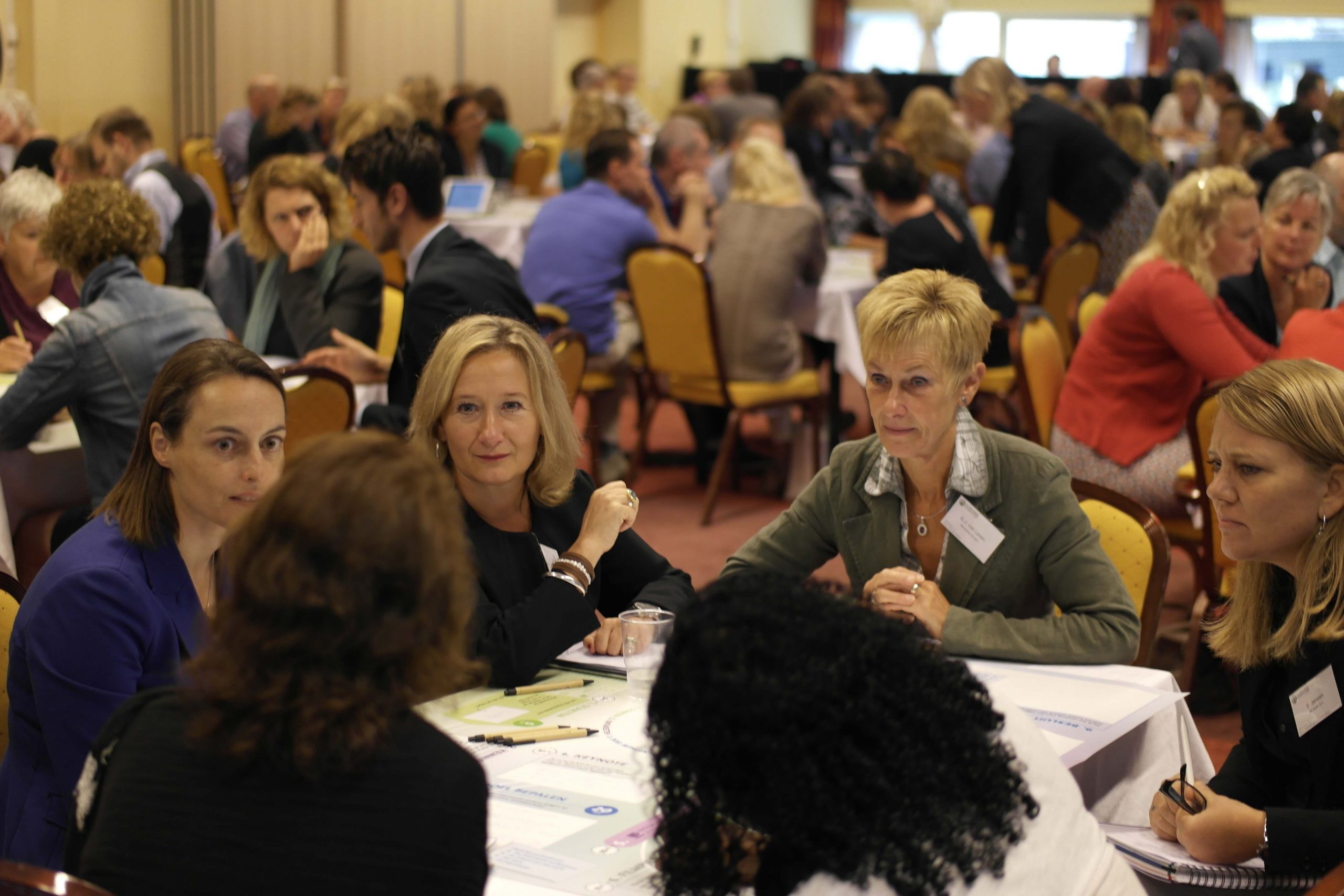
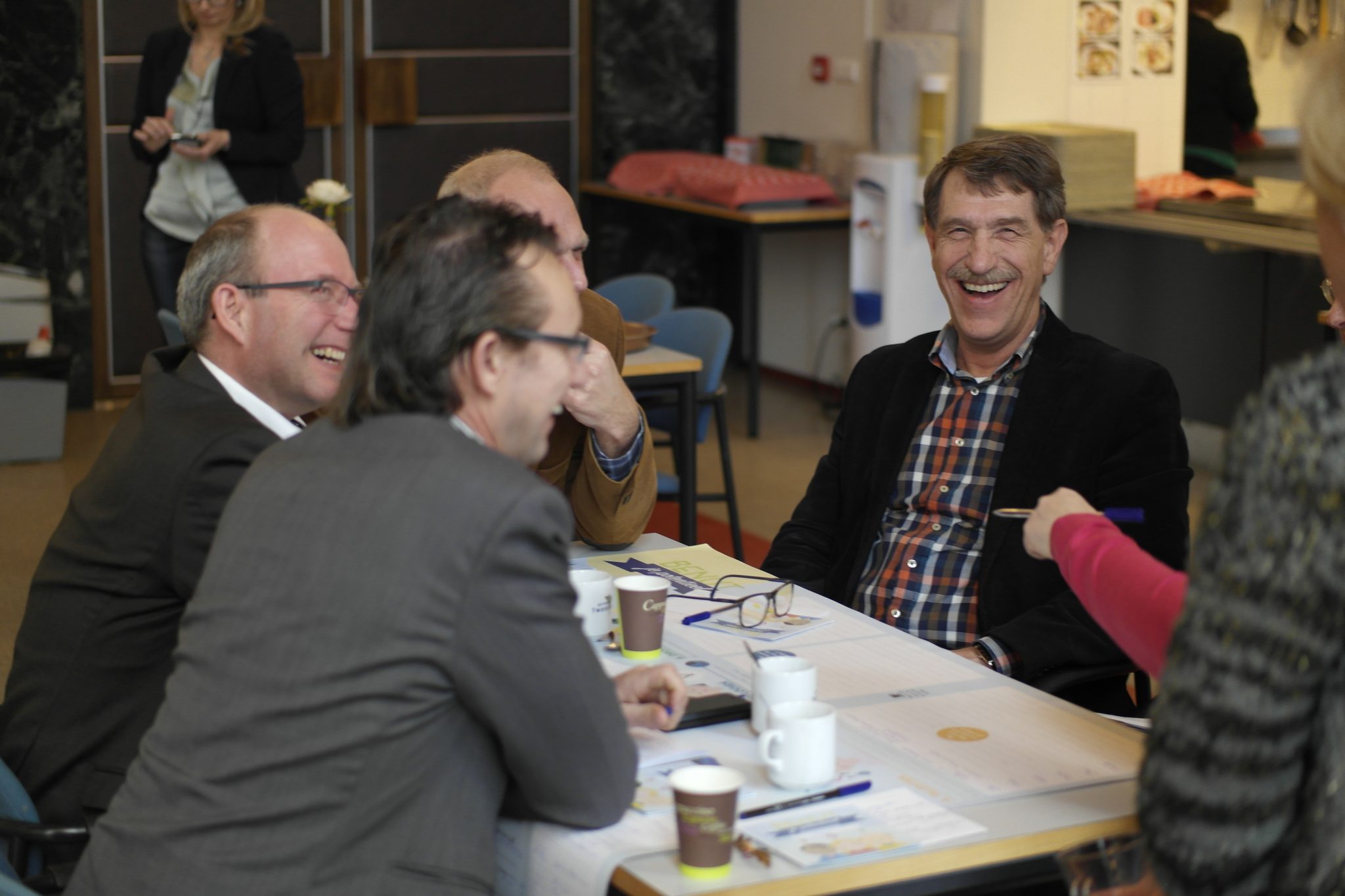
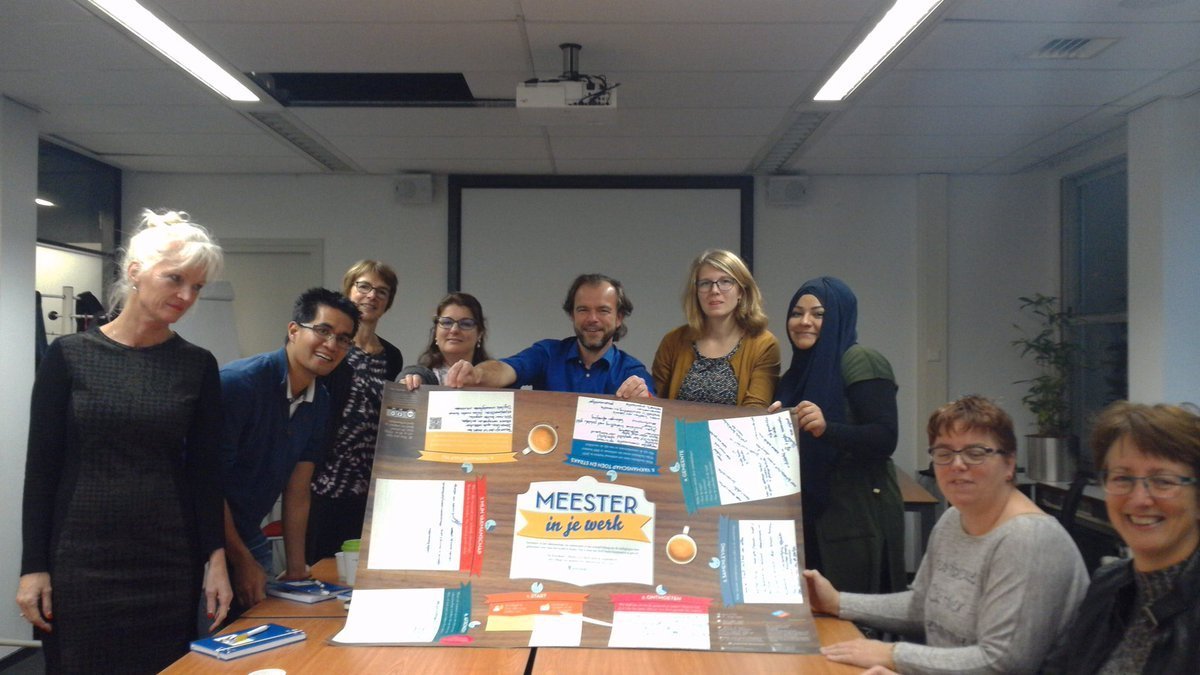
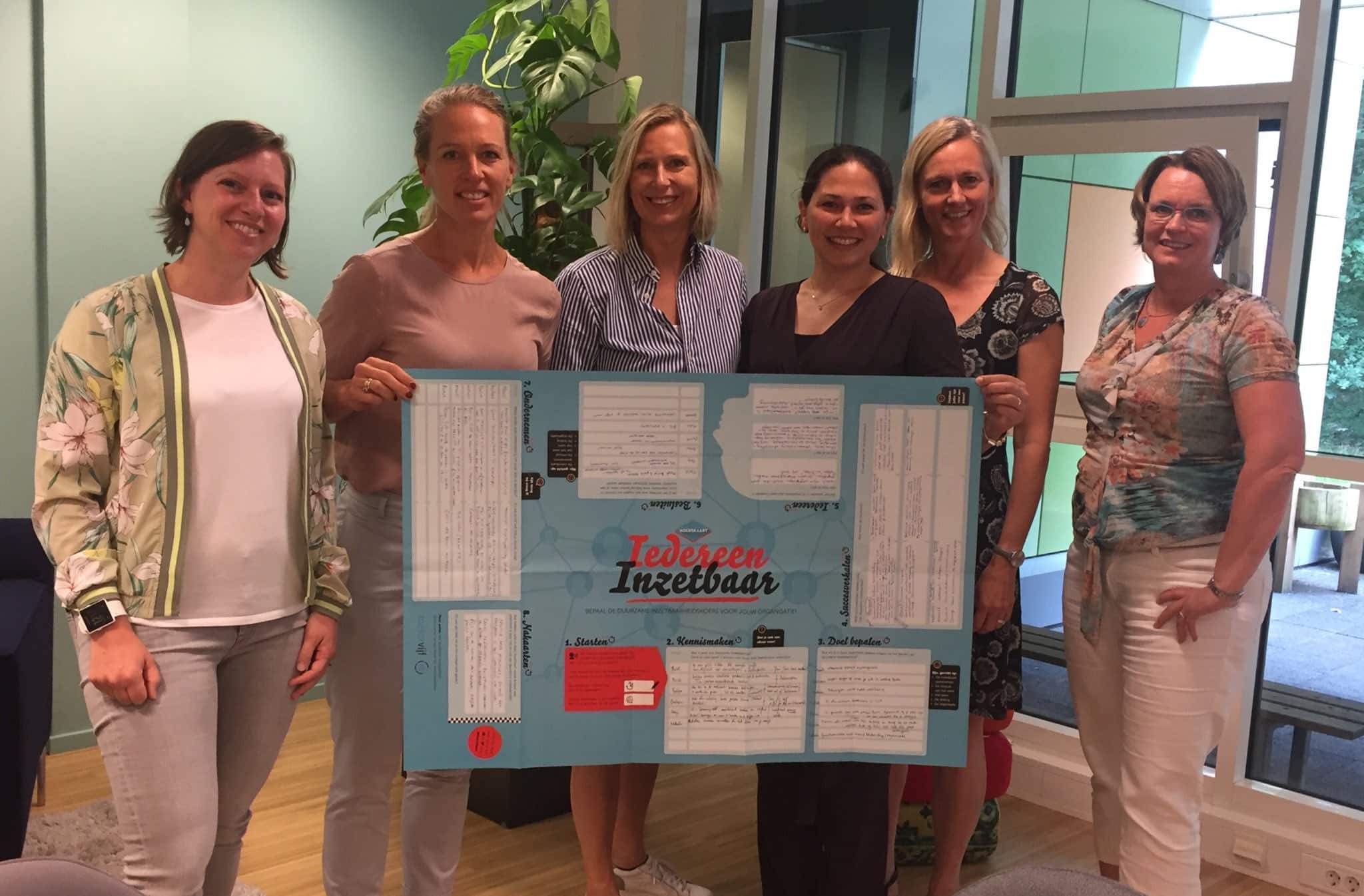
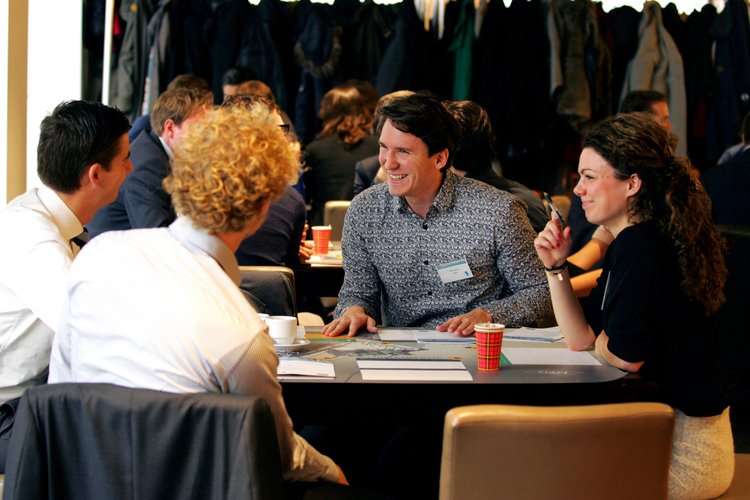
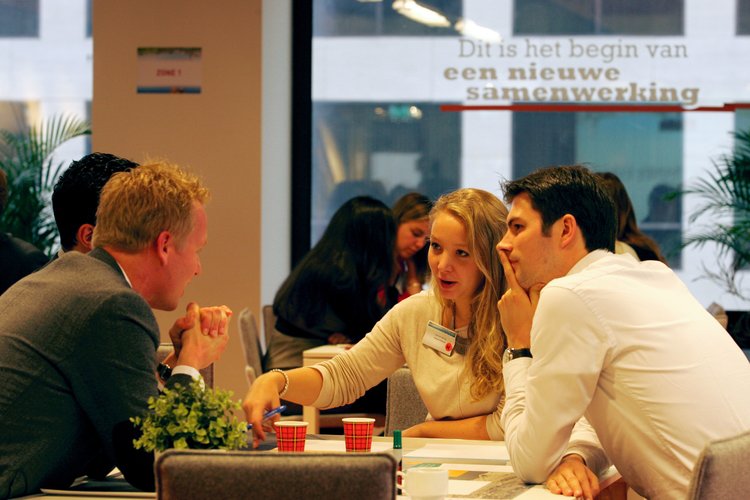
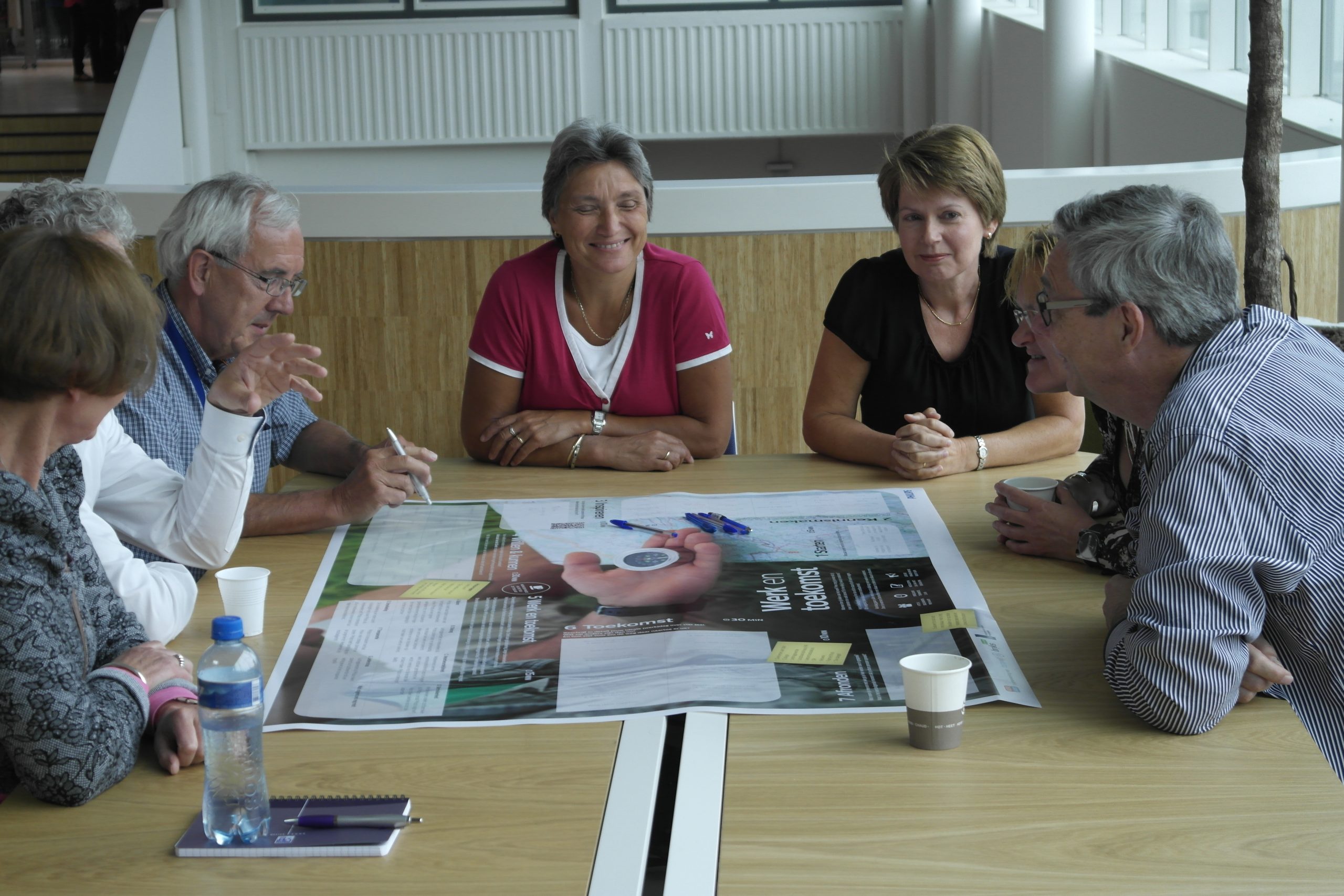
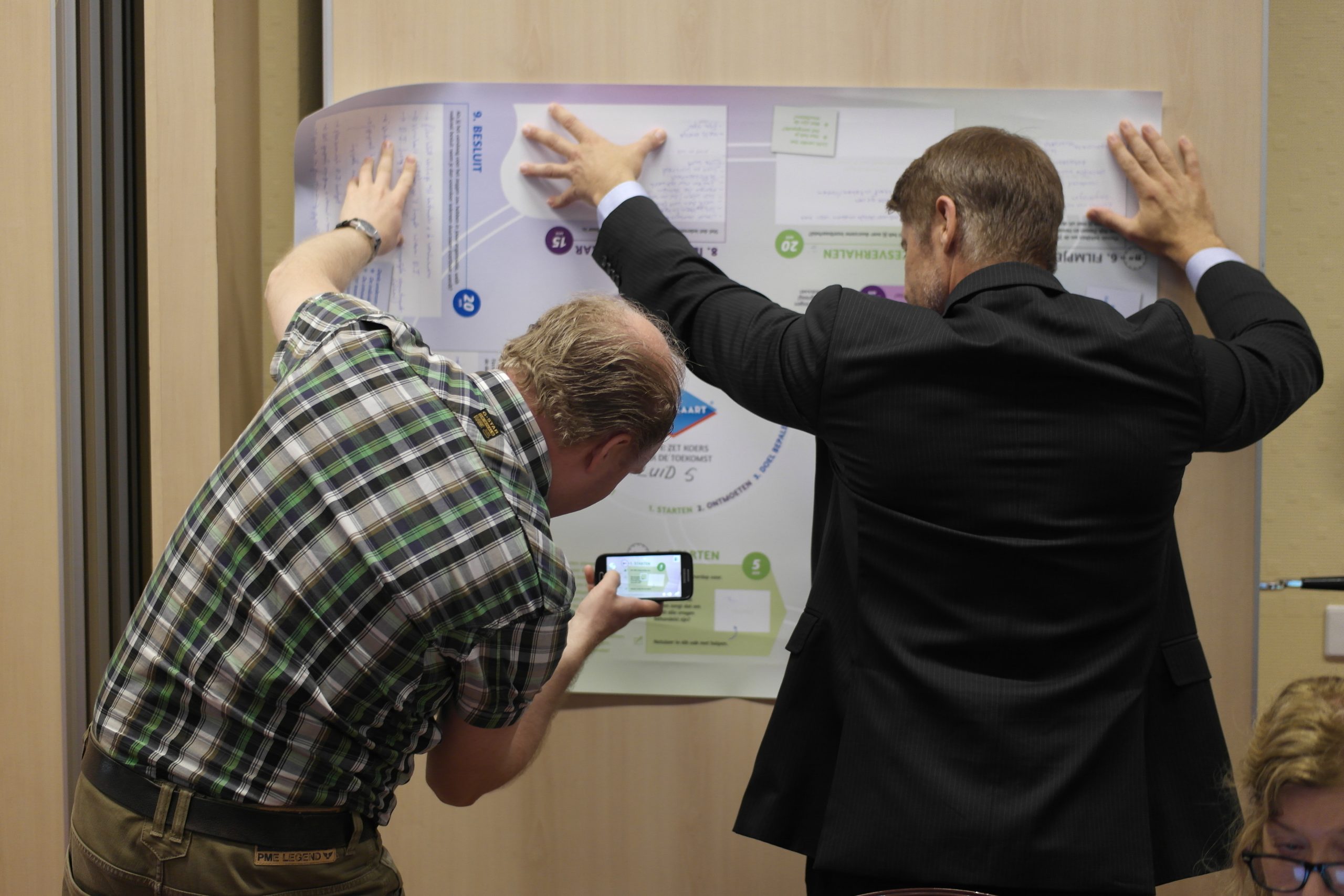
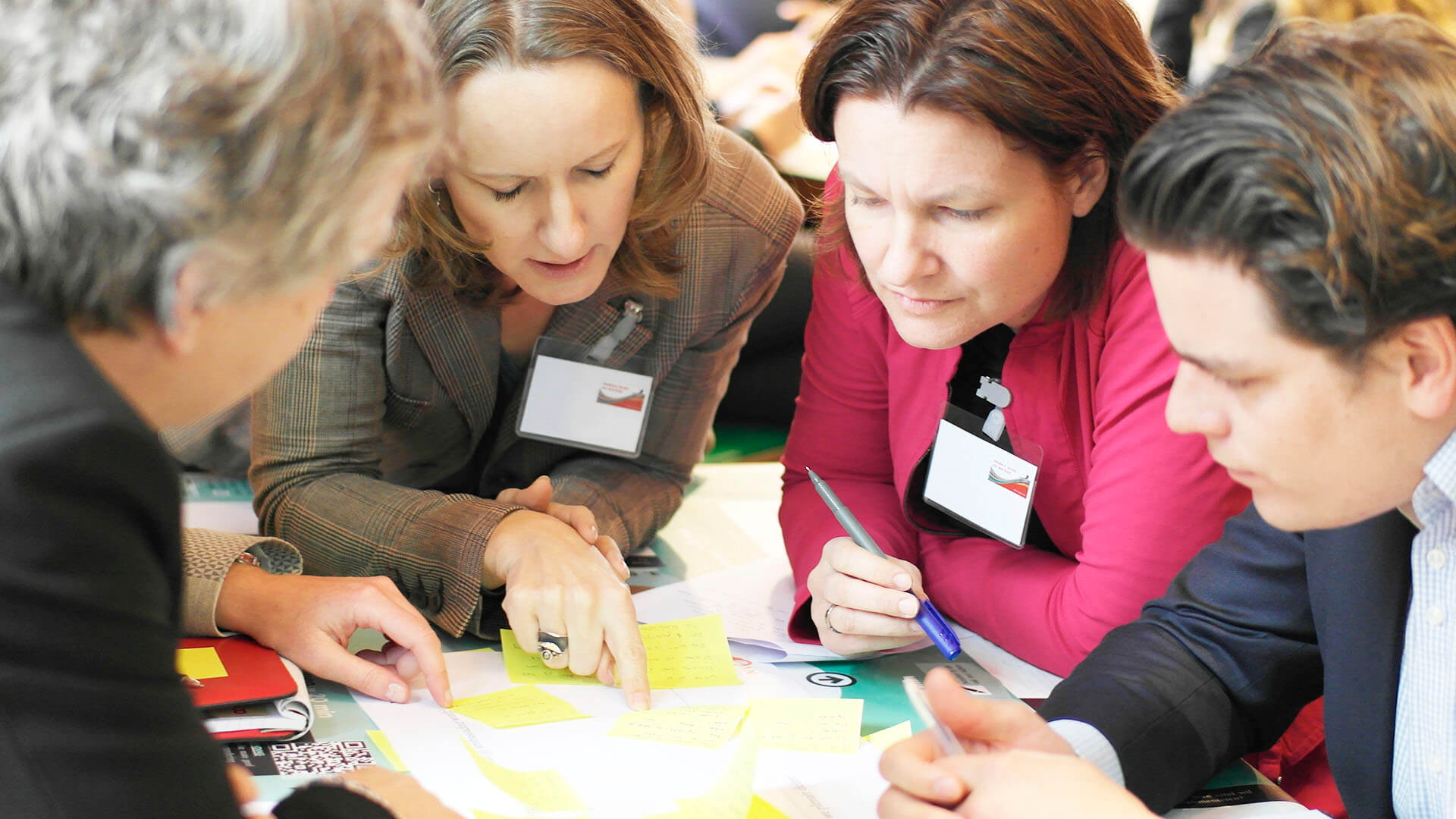


Self-explaining, manual free
Play without a facilitator!
Self-directing
from A to Z
Built-in
reporting
Optional
data collection
One PDF, two playmodes
Easy-to-use by anyone, with an attractive and accessible design.
No software lock-in whatsoever. Feel free to distribute it yourselves.
Print&Play
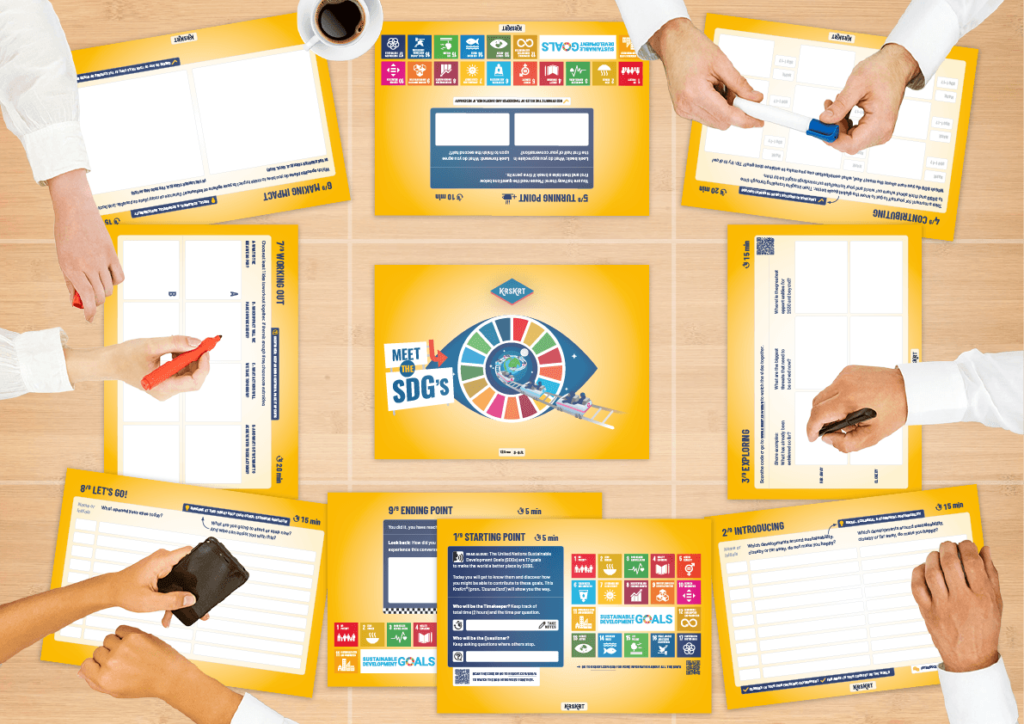
Print on A4 paper, get a pen, start at 1 and take notes. Go large scale with one KrsKrt per table.
Project&Play
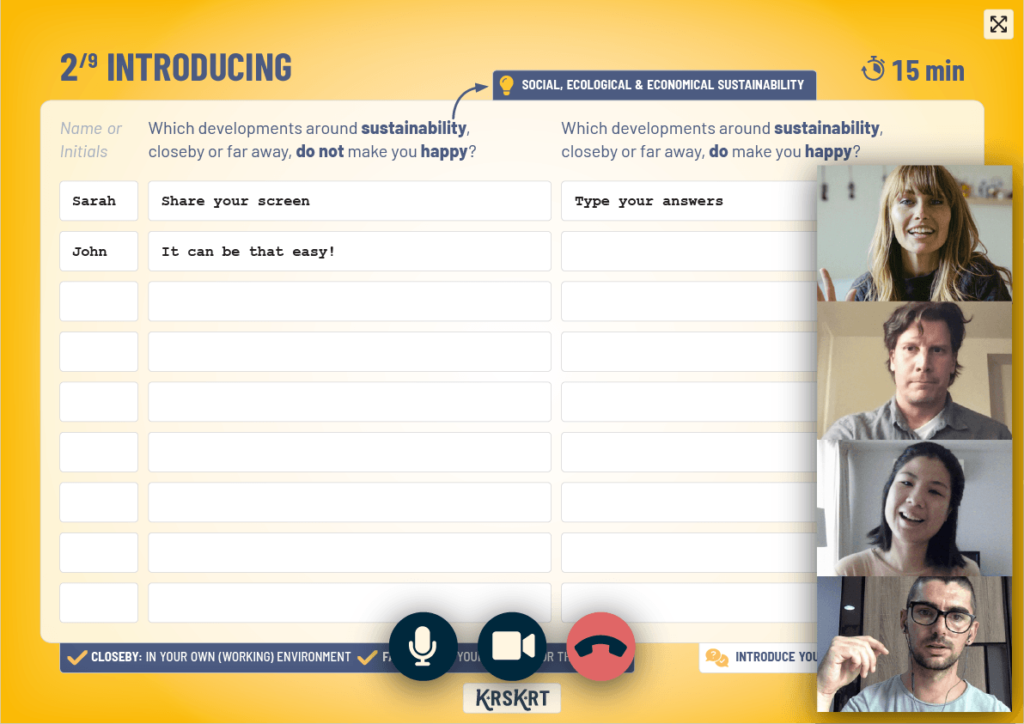
Share your screen in a video conference or conference room, click through the PDF taking notes.
Perfect at a
LARGE SCALE
Dialogue by Design
Every KrsKrt is built upon the same, tried-and-tested ABC-format. And just like movies or songs every KrsKrt is unique in its main topic, design and questions.
A manual is unnecessary. That’s what we call ‘Dialogue by design’. So play without any facilitation and use it at a large scale. The KrsKrt is the facilitator.
Stage A: EXPLORING
1. Intro and distribution of roles
2. Introducing the players on-topic
3. Exploring the topic together
Stage B: DEEPENING
4. Deepening the conversation
5. Break, looking back and forward
6. Practicing and prioritizing
Stage C: TRANSLATING
7. Harvesting and/or planning
8. Sharing realizations and actions
9. Looking back and looking forward
What will you explore next?
Frequently asked questions
A KrsKrt is a practical and structured tool to have a dialogue with peers. There is no need for dialogue rules, which have been part of the design. And you do not need a facilitator or manual. Also, there is no need for special technology or software lock-in. It is meant to be self-organizing and not centralized. This is what makes it unique.
KrsKrt is derived from the original Dutch brandname KoersKaart. By deleting the vowels it is possible to pronounce differently for every language. In English it is pronounced as ‘CourseCard’, in German as ‘KursKarte’ and in French as ‘CourseCarte’.
KrsKrt is a melting pot of all kinds of theories and thought schools, which have been incorporated through time. Some of these are:
- Design thinking: Every KrsKrt is co-created with the peers through rapid prototyping.
- Appreciative Inquiry: Every KrsKrt has a structure which is based on creating a positive spiral.
- Dialogue: Co-existence is a basic principle, where all ideas and opinions can exist next to each other.
- Play: Play is a basic characteristic of humans. Competition and ‘winning’ is not what KrsKrt stands for.
- Self organisation: A KrsKrt is played without a facilitator, because the group knows how to do this, with the KrsKrt facilitating them.
- Wisdom of the crowd: When people think together, more wisdom arises, it becomes more than the sum of its parts.
- Ownership: If people feel ownership of something, they will also be more involved in what follows.
KrsKrt can be used without a manual and guidance, because it is so simple. That simplicity seems very simple, but it took years of simplification to make it this simple. This has to do with replacing texts with icons, deleting a lot, simple division of roles, logical hierarchy of content. And every KrsKrt is frequently tested in and with practice. And all this to create a ‘happy flow’. That it all runs very smoothly and can therefore reach a certain level of depth.
KrsKrt originated in 2008, when Sietse Rauwerdink was asked to prepare a training day together with a colleague for the consultancy firm where he was working at the time. He based this on a similar working method that came from a partner agency in Germany, but was rather ‘top-down’. He then supplemented this with answering fields and voilá, the KrsKrt was born (although it was called differently at the time).
In 2011, Sietse started as an entrepreneur and for the first time had further developed the methodology in such a way that he himself was completely unnecessary as a facilitator during the sessions. This made it interesting to apply for entire organizations and communities. For the first time, the KrsKrt was developed in co-creation at Philips and in the following years it was further developed under the banner of De Koers.
Along with the expansion came new applications: data collection was used to help shape bottom-up policy and strategy. In addition, more and more public, open KrsKrt’s were developed that became available to everyone, possibly even as a PDF to print yourself.
Since 2022, KrsKrt/KoersKaart has been an independent company again (from 2014 to 2022 under the wings of De Koers) and new applications and developments are being worked on.
Sietse started KrsKrt because he himself became frustrated in guiding groups.
- At the end of the meeting, everyone looked back at him as a facilitator. Not invented here, no Ownership.
- There was much talk during the meeting, but little action resulted. Bla Bla, no Actorship.
- And the meeting was rarely if ever properly followed up and died a clean death. One-off, no Leadership.
- And the bottom line was that much was thought for others, but little with others. Shifting the Burden, no Co-Creation.
And these frustrations are shared by many. And the KrsKrt can be a solution for all these frustrations, if used properly. Because, as with any tool, it depends on the right people, intentions and forms.
In addition, there is an increasing appeal to people’s independence, both in cooperation and in society. The hierarchical relationships of the past are increasingly no longer sufficient and people have become more assertive and knowledgeable. These developments are respected by giving people more responsibility for their own learning process, which of course also applies to groups. That’s why self-steering a KrsKrt feels so intrinsically rewarding for every player.
Founder Sietse has stood at the cradle of many working methods that are all based on the same methodology. If you would like, you can even design it in a PowerPoint.
In principle, we work with the following working methods:
- KrsKrt (Large Format): This is the original version. The most used and most recognizable working method. Ideal for large-scale application. You just have to distribute the cards and everything else will be self-explanatory.
- KrsKrt (Separate Sheets): This is a hybrid variant based on a simple PDF. The blocks are placed separately on ‘sheets’. This can be printed by people themselves on A4 sheets to play at the table (Print&Play) or filled in digitally directly in the PDF (Project&Play), for example during a video conference. This is as easy as it can get. There is no dependence on software, no GDPR, distribution is easy (even via email) and everyone understands how a PDF works.
- Tailor-made tools: We have developed many other dialogue tooling in recent years, all of which are based on a self-directed dialogue between peers.
KrsKrt is a protected trademark, registered with the Benelux office for intellectual property. So the brand may only be used with permission.
In addition, the KrsKrt Concept has been registered as well. To make the KrsKrt Concept available to the world (in the longer term) and at the same time to properly protect it against misuse. It can be found on this page.
That is something that happened historically. We are a bit contrarian, like to swim against the current. But practically, it was created by the design of the KrsKrt. When you look at the card at the table, you go with your eyes to the center image and then down (to question 1). And then you automatically move to the right (question 2). And then the route goes counterclockwise by itself. The conversation is also intended to bring about something, and in this way that already starts with the way it operates.
But it makes more sense than you think. Just look at the ‘@ sign’ on your keyboard, it follows exactly the same route.
The composition of the group is very difficult to determine from the outside. There is not one rule of thumb. It is mostly a practical question: who should definitely participate?
Besides that, there is an important question whether you want to work with a team or in max-mix. The first is useful if you want to make concrete agreements, the second is useful if you want to achieve cross-pollination.
The question of whether a facilitator or leader should sit at the table is a more important question.
In principle, a facilitator at the table is not necessary. One of the basic ideas is that people can do much more themselves than they themselves think or than their manager/leader thinks. This is especially true for groups. And our experience over the past 15 years has shown that groups are very good at guiding their own process, provided they have the right tools to do so.
This is also called a transitional object in developmental psychology. The tool helps to make a change that would have been much more difficult without the tool.
We often notice that a process facilitator or discussion leader is resorted to out of fear and also a little distrust towards the group. The organizer is afraid that the group will not be able to do it independently and therefore resorts to an external person, who is also an intervention in itself. The conversation then often goes through the facilitator, which makes it artificial. And it leads to ‘not invented here’, in which the group shifts its burden to the supervisor.
A supervisor can have added value in two ways:
- As a supervisor of several tables and a broader experience. This includes major events.
- As a substantive expert at the table, but there is also a slight distrust, because the group has the wisdom that is needed in almost all cases. Only do this when outside knowledge is absolutely necessary to make the conversation a success.
This is always a dilemma and depends on many factors. The most important question is: ‘What is the purpose of the session?’ and ‘Does the manager or leader contribute to this goal by sitting at the table?’
If the purpose of the session is to reach concrete agreements, it may be legitimate for the manager or leader to sit down at the table. But if it really has to be done by the group itself, that is often unwise. The manager then becomes an excuse to shift everything to (shifting the burden), which means that ownership disappears from the group. The same goes for a facilitator, by the way.
In addition, a manager or leader can also have a major influence on the safety in the group. People can express themselves more, but often less, because their words can have consequences. The absence of a manager or leader can have a positive impact on the openness of the conversation.
So it’s not a simple ‘yes’ or ‘no’, but the answer is ‘depends’.
KrsKrt is ideal on a large scale. It is also referred to as a Large Group Intervention. And in combination with a co-creation process and co-reflection afterwards, you can even speak of a Large Scale Intervention. And if it is embedded in a larger transformation, it can even lead to Whole Scale Change.
It’s very simple. For every KrsKrt you arrange a table and a pen for each group. And you do that until everyone can participate. You can then leave it to the group itself, but you can also choose to embed it in a larger program, such as a conference or event. We have gained a lot of good experiences with this over the years and it is a unique working method in the landscape of workshops and presentations.
You can also use Koerskaart on a large scale by applying a guerrilla tactic. By letting it roll through the organization like a snowball. Group by group you can achieve an enormous scale. This certainly works well in combination with a time block of a certain period, after which the net can be retrieved.
Follow-up can take place on three levels:
- Individual: this always comes up in question 8. So the KrsKrt guarantees this in itself.
- Group: the group determines the next steps for questions 7 and 9. So that is also guaranteed.
- Collective: If you play with many groups at the same time, the question of follow-up is always tailor-made.
And that collective question is especially the most interesting. Because it kinda depends on the goal:
- Good conversation as an end in itself. Then there is no need to follow up. If you communicate this well, this can work just fine. However, only raise the expectation of succession if you are going to live up to it!
- Tactical/strategic: with all the outcomes, for example, new policy or a new strategy can be made. You can do this on the spot by having the groups provide plenary feedback and collect the net. You can also do it afterwards, by analyzing all the results with a dust comb (Co-reflection phase in ‘Custom-made’) and arriving at a (preferably supported) end product.
However, there are endless possibilities. First try to clarify what the goal is, then the means will follow automatically.
Yes, that’s our specialty! We do this in co-creation. Take a look at Custom-made.
